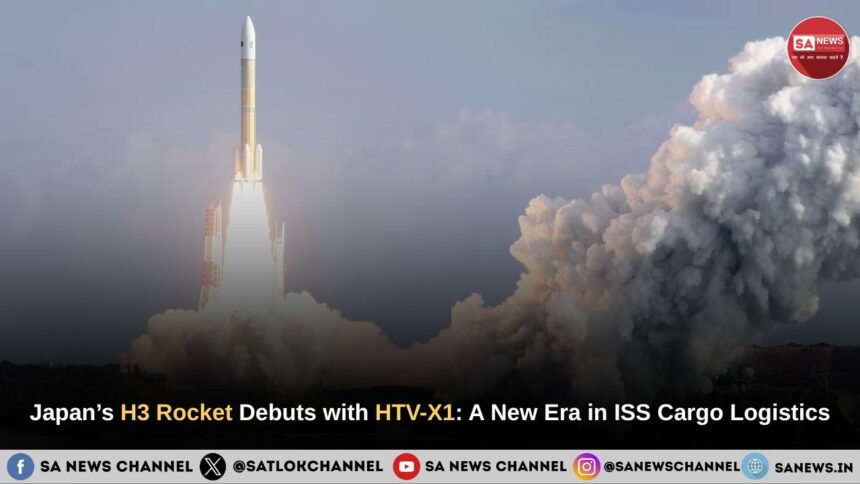On 26 October 2025, Japan set a major milestone in its space flight capabilities, when its new-generation H3 rocket successfully launched the HTV-X1 uncrewed cargo spacecraft toward the International Space Station (ISS). The mission lifted off from the Tanegashima Space Center, restoring confidence in Japan’s flagship rocket program and reinforcing the country’s critical role in international space logistics.
The HTV-X1 — the successor to Japan’s earlier “Kounotori” cargo vehicles separated from the rocket and reached its intended orbit, just minutes after launch, marking a smooth beginning to a long-anticipated technical demonstration flight.
A Fresh Start After Setbacks
The H3 rocket is designed to replace the aging H-2A and H-2B Launch Vehicles, with improved cost-efficiency and flexibility to compete in the global launch market. Earlier test flights suffered failures, making this successful mission a critical turning point for Japan’s space ambitions.
By overcoming those setbacks, Japan has shown it is back on track to deliver a reliable heavy-lift rocket for both domestic missions and international customers.
HTV-X1 — Japan’s Next-Generation Space Cargo System
The upgraded HTV-X series introduces several improvements over its predecessor:
- Higher cargo capacity.
- Ability to support longer stays attached to the ISS.
- Improved power and communication systems.
- Configurations for both pressurized and unpressurized payloads.
The mission is primarily a technology demonstration with a lighter payload, but it represents the foundation for future operational supply flights to the ISS and beyond.
Strengthening Global Space Cooperation
Japan is one of the key international partners that keep the ISS operational. By successfully debuting this new logistics vehicle, the nation enhances its role in maintaining the orbiting laboratory and supporting thousands of ongoing scientific experiments.
Also Read: ISRO CMS-03 Satellite Launch: Strengthening India’s Strategic Communication
The mission also supports Japan’s long-term strategy to position itself as a dependable supplier in the global space economy. As nations and companies move toward commercial space stations and lunar infrastructure, logistics capabilities like the HTV-X will become even more valuable.
Gateway to Future Missions
The success of the H3 HTV-X system has implications far beyond the ISS:
- It could support commercial cargo contracts in low-Earth orbit
- It may eventually contribute to lunar supply chains as part of Artemis partner missions
- It boosts Japan’s strategic autonomy in space access
Japan’s vision goes hand-in-hand with a rapidly evolving space landscape where both national agencies and private companies are racing to build infrastructure in orbit.
Why This Launch Matters
Area of ImpactImportanceEconomic growthOpens doors for commercial launch marketsGlobal cooperationStronger contributions to ISS operationsSpace logisticsIncreased cargo capacity and mission flexibilityTechnology leadershipCompeting with U.S., European and Asian launch providers |
With this achievement, Japan moves confidently from participant to provider in Space Infrastructure, a transition that will shape future exploration efforts.
Looking Ahead
The launch of HTV-X1 is more than a routine supply mission — it is a strategic statement.
Japan has demonstrated that its next-generation space systems are ready for real-world demands. As the ISS ages and new private stations emerge, reliable logistics partners will be essential. Japan is placing itself at the center of that future.
The Crux
Japan’s H3 rocket debut with HTV-X1 marks the beginning of a new era in ISS cargo delivery. By proving the strength of its redesigned launch system, Japan reinforces its commitment to international cooperation and prepares for a more commercially driven space environment. The success of this mission not only boosts national pride but also signals that Japan is ready to play a major role in sustaining humanity’s presence in space.









